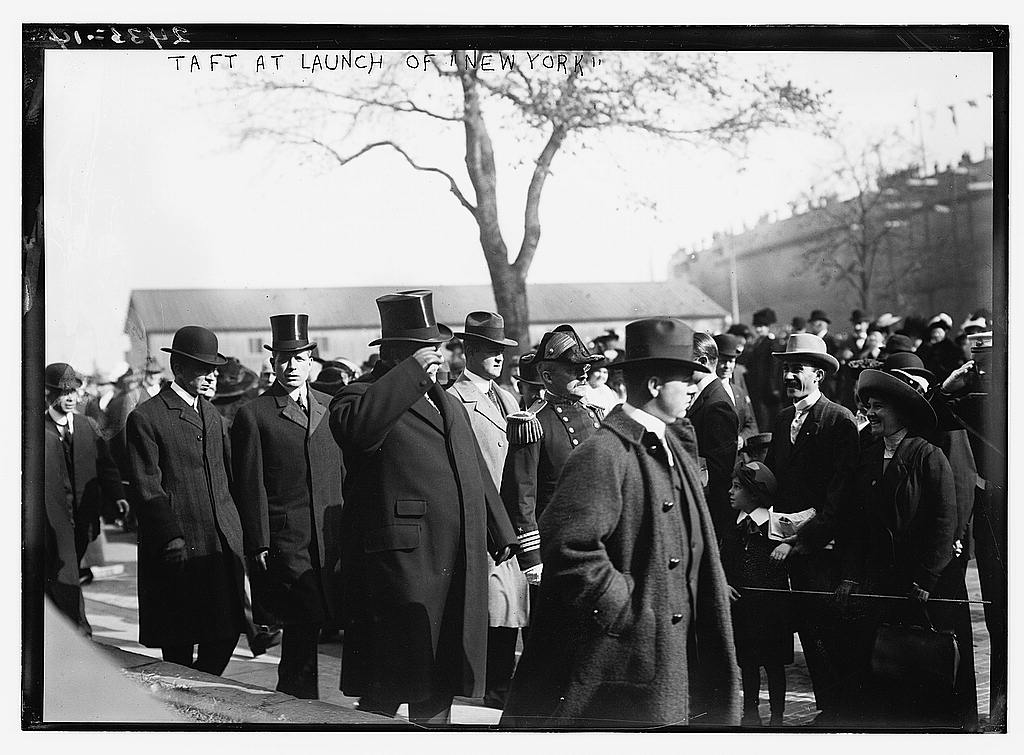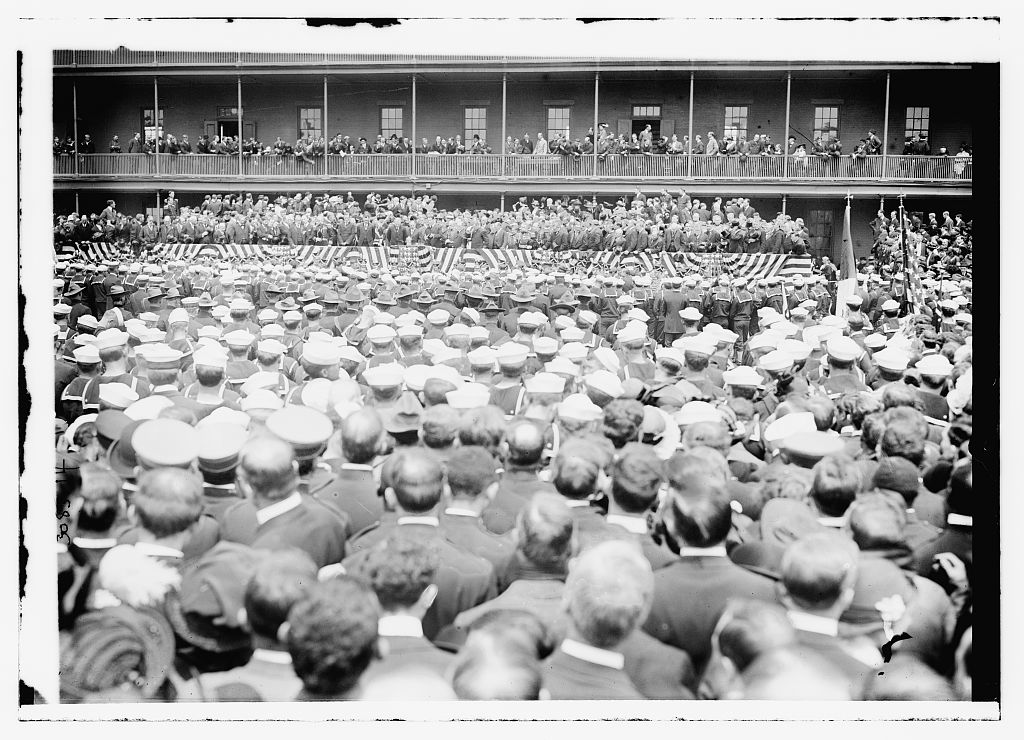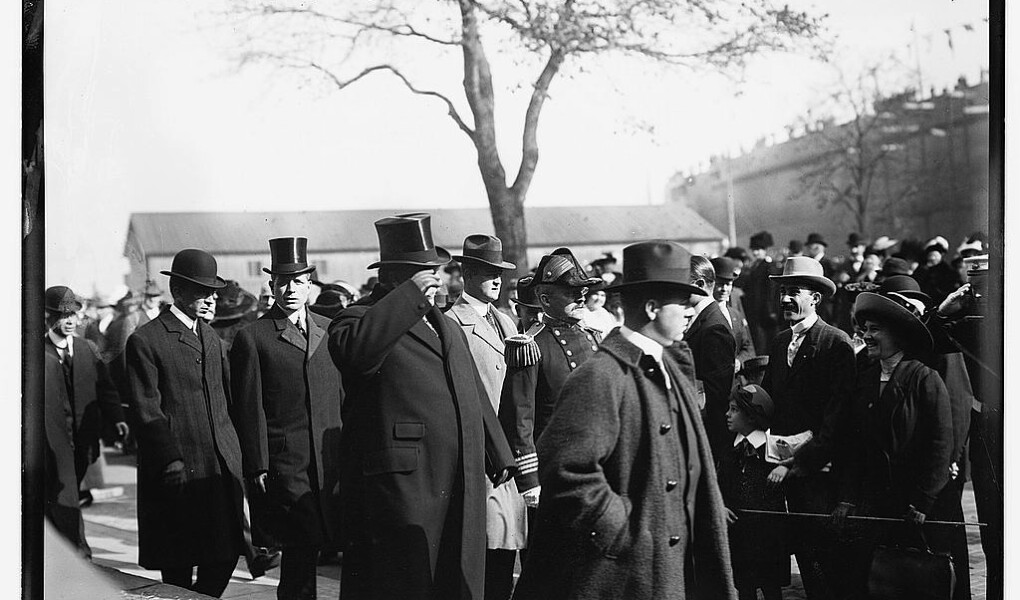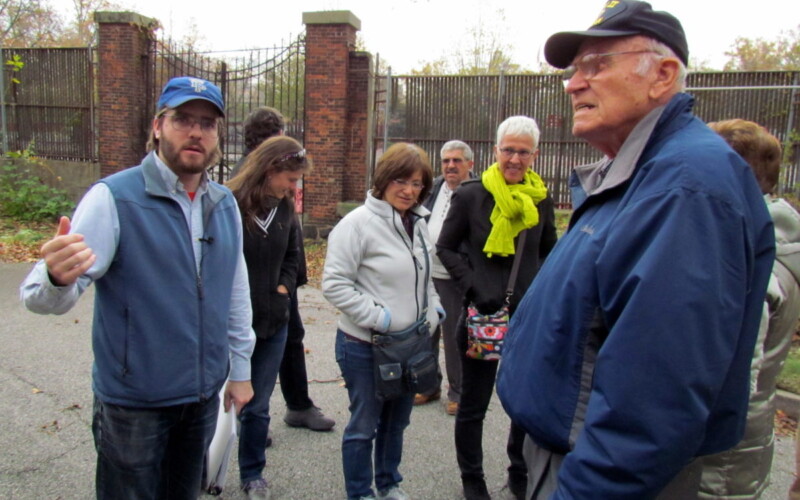Despite 165 years of operating as a federal shipyard, and at one time being the largest shipyard in the entire world, relatively few sitting US presidents have paid a visit to the Brooklyn Navy Yard. Though Presidents Day is meant to commemorate Washington and Lincoln, neither one ever paid a visit to the yard (in fairness, Washington died before it opened in 1801, and Mary Todd Lincoln did visit, as we noted in an earlier post). So instead, we’ll look back at the brief yet memorable visits by some less heralded chief executives.
William Howard Taft was among the few president to visit the yard while in office. Prior to assuming the presidency, while serving as Secretary of War under Theodore Roosevelt and military governor of the Philippines, he undoubtedly made visits to the yard, and he made a brief stop in on November 14, 1908 as president-elect. In nearby Fort Greene Park, Taft spoke at the dedication of the new Prison Ship Martyrs’ Monument. Built to memorialize the 11,000 Americans who died aboard British prison ships moored in nearby Wallabout Bay during the Revolutionary War, this new 149-foot column was erected on the centenary of the original tomb, which had stood just outside the Navy Yard in Vinegar Hill (a topic we explore extensively on our Overview Tour). 20,000 people gathered to hear Taft, as well as Gov. Charles Hughes, speak at the dedication. It was a bitter cold day, and when Taft did finally step to the podium, the New York Times wrote, “there was a little cheering, but not much, as the crowd was cold and didn’t want to delay the proceedings.”
Taft would come again, this time just days before he would be ousted from office, for the launching of the battleship USS New York on October 30, 1912. 40,000 people would crowd into the yard to see the launching of the ship, at the time the largest in the American fleet. A so-called super-dreadnought, the 25,000-ton ship would go on to serve in both world wars. Taft’s visit came with little fanfare, with most of the attention directed towards the massive ship, and the fact that its christener, Elsie Calder, daughter of Congressman William Calder, failed to shatter the champagne bottle on the first try, this despite the fact that “she had practiced for several days.”

The man who defeated Taft in 1912, Woodrow Wilson, would make one of the most memorable visits to the Navy Yard on May 11, 1914. The occasion was a somber one, as it was a memorial service for sailors and marines killed during the capture of Veracruz, Mexico just three weeks before. Mexico was in the throes of its revolution, and diplomatic relations were strained between the US and the government of Gen. Victoriano Huerta, who had seized power in a coup in February 1913. After the Tampico Affair, in which nine American sailors were arrested in the Mexican port in April 1914, followed by wrangling over diplomatic protocol and vigorous American saber-rattling, Wilson ordered the occupation of Veracruz, Mexico’s most important port city.
The invasion began on April 21, with the objective of seizing the port, customs house, and other critical infrastructure in order to prevent imported arms from reaching the Huerta government (the US had imposed an arms embargo on Mexico). Hundreds of marines and sailors from the USS Florida (built at the Brooklyn Navy Yard) and USS Utah went ashore, and faced scattered resistance from the army, armed citizens, and cadets from the naval academy in the city. The American commander, Adm. Frank Friday Fletcher, decided that the port alone could not be held, and American forces would instead have to occupy the entire city. In two days of fighting, 17 American servicemen were killed, and the occupation of the city would last for another six months.
The bodies of these 17 men were brought to New York aboard the USS Montana, which delivered them to the Battery in Lower Manhattan on May 11. They were then carried in a procession over the Manhattan Bridge to the Navy Yard, where a memorial service was held, attended by 10,000 onlookers. Wilson, who unexpectedly joined the parade – he was originally supposed to go directly to the Navy Yard from Penn Station – was described by the Times as “silent and very grave. … His square jaw was set as he rode in the open carriage, and his eyes were misty as he repeatedly raised his hat and bowed to the multitude.”
Wilson then stepped to the podium erected in front of the Marine Barracks (since torn down) before the crowd gathered on the parade ground. His speech was similarly grave, yet triumphant, praising the men and the cause for which they gave their lives. “We want to serve the Mexicans if we can,” he said, “because we know how we would like to be free, and how we would like to be served if there were friends standing by in such case ready to serve us. A war of aggression is not a war in which it is a proud thing to die, but a war of service is a thing in which it is a proud thing to die.”

The yard’s history is littered with visits by past, future, and vice-presidents, but sitting presidents were rare. It’s unlikely that these are the only two presidents to visit the yard while in office, and we will keep digging for more examples. Though it is no longer a federal naval shipbuilding facility, the Brooklyn Navy Yard is an urban industrial park of national prominence, a leader in adaptive, sustainable reuse of former military sites. As our current president has a keen interest in alternative energy, green manufacturing, and job growth – all things he harped on in his recent State of the Union address – it may be time for President Obama to pay a visit to the reinvented Brooklyn Navy Yard.
You can be like presidents Taft and Wilson and visit the Brooklyn Navy Yard yourselves! We offer our Overview Tour of the Brooklyn Navy Yard on weekends at 2pm during the winter months (check our tour calendar for details), and other special themed tours of the yard. We also offer all of our tours and special packages for private tour groups. All tours begin at the Brooklyn Navy Yard Center at Building 92, which offers free admission to three floors of exhibitions on the yard’s history, the Ted & Honey rooftop cafe, and a host of great special events and programs.
The post was authored by Andrew Gustafson.




